The business behind faucets, and how we missed out on $25,000….
If you have ever read or visited TapCrypto before, I think you can probably guess the answer to the question posed. What if I told you that you could be wrong? No, we are not trashing the entire reason for our site/project/existence. The truth is that we think Crypto faucets are a fun, exciting, easy, risk free way of earning a few bucks, but more importantly we are believers in the future value and growth of the cryptocurrency market. Thus, we believe that a dollar earned today can be two tomorrow (or more we obviously hope). That being said, like many things in this world, there will be detractors. Those adamantly against crypto faucets are often not viewing the bigger picture and that circumstances, thus value of faucets, vary by each individual. Below we want to cover the good, the bad, and the ugly of the crypto faucet industry. Please read with an open mind, comment politely, and have a civil conversation, we are all people after all.
How does the faucet business operate?
If you read our reviews of individual sites on TapCrypto, you will be able to tell that many sites vary in features, so it should go without saying that each site has different business models overall. Pipeflare and Free-Ethereum have about as much in common as Morality and Politics. With that being said we want to break down the faucet industry to its basic elements.
Revenue and Expenses
The original Bitcoin Faucet (and a few others in crypto history) distributed money out of the “goodness” of their own heart. Gavin Andresen created the original in 2010 and funded it himself. One can argue it was also out of self interest as getting Bitcoin into the hands of more people creates a community that allowed Bitcoin to survive, grow and thrive but that is splitting hairs and a pointless argument. Now, most faucets are operated as businesses or projects, with the intent to make money. That is not a deal breaker for many, knowing that at least allows the user to make a more informed decision. Regardless, the idea that faucets allow many people without the resources to purchase crypto, access to crypto, is still relevant and important. Mass usage and ownership of crypto currencies is a good thing for the cryptocurrency market/industry.
Ad Revenue
The primary way faucets make money is via Ad Revenue. Its a fairly simple transaction/concept. A faucet will sell space on their site pages to advertisers, things like banner ads, pop ups, and even those pesky redirects. They all earn the faucet operator money. Typically the site operator will get paid by the advertisers a certain set rate per some amount of views or impressions, like 10,000. So the more active daily users the site operator gets, the quicker they hit those payment thresholds. To entice users the operator will pay visitors to the site via various cryptocurrencies. Its a mutually beneficial arrangement in many aspects, though there are some unscrupulous operators.
Shortlinks
A shortlink is an offshoot of ad revenue. In the simplest terms, it is a link that routes right back to the site you are already on, that’s not a joke or a mistype. However, in order to get there you must go through a series of challenges. Most commonly these are one or more captchas across multiple pages, and wait time around 10 seconds. Why do this? Because the entire time you are completing this action you are exposed to advertisements. Just like our previous section, the shortlink operator gets paid by advertisers, in turn pays the faucet operator a fee or commission for referring the user, and the faucet operator pays the user a small amount of crypto for executing the task. Similar to ad revenue, shortlinks earn fiat money (USD) for the faucet operator at a rate of a few dollars per 1,000 views typically. Below we cover the rate at which shortlink sites pay faucet operators, this is just one service, but you will see similar rates across the industry.

Paid to Click (PTC)
Many sites have Paid to Click (PTC) sections. If you have not caught on, yet again this revenue stream revolves around advertising. This source of income is user-generated vs outside advertisers. In this case, faucet users can either utilize the funds they have already earned on the site, or deposit funds and run their own advertising campaigns. Please research before depositing any funds, this goes for all sites and any financial transactions ever!
How a faucet makes money from this activity is via the “spread”. In simple terms, they will charge the user campaign more than they pay to the users viewing the campaigns.

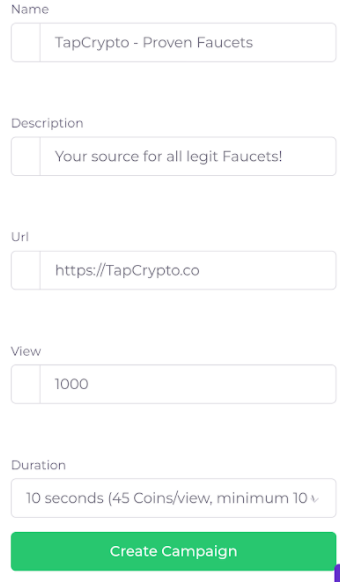
In the scenario above, we are creating a campaign that will cost us $0.30 USD, a rate of 45 coins per view for 1,000 views. The users of the site may only earn 30 coins per view. Thus the site operator earns the equivalent of 15 coins. Based on the implied value of each coin, an operator in this example could earn about $0.10 per campaign created. Profit can vary by site, plus many sites have different options available for campaigns, such as longer view requirements, more prominent listings, etc. All of which changes the cost, payout and profit of the campaign.
| Per View | Per View | Per 1,000 | Per 1,000 | |
| Coin | USD | Coin | USD | |
| Revenue | 45 | $0.0003 | 45,000 | $0.30 |
| Expenses | 30 | $0.0002 | 30,000 | $0.20 |
| Site Profit/Margin | 15 | $0.0001 | 15,000 | $0.10 |
Offer walls/Task walls
Offer walls, sometimes referred to as Task walls, are monetization opportunities for faucets and other websites. Within many sites, these provide users rewards in exchange for completing various tasks or offers. These vary and there are many different offer wall service providers such as OfferToro or AdGateMedia. Most offer similar opportunities and reward users for taking surveys, quizzes, watching videos, or downloading mobile apps and games. The one thing that all users should know when utilizing offer walls are that they rely heavily on the collection of data. If you make a purchase or a subscription to a service, your data is shared with those advertisers. So as always, if you are signing up or spending money, be careful. If you are taking surveys and quizzes, know that you are giving away data in exchange for cryptocurrency. That is how the money is made, the faucets earn commission. There are actually decent and legit offers, so this isn’t an alarm, and they do payout more than any other activity on faucets, just make the decision that is best for you.
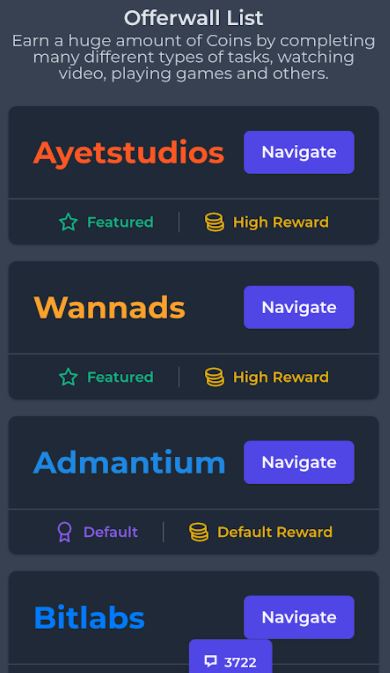

Games/Gambling
I don’t believe I’ve ever heard of a casino that came out a loser in the end. So when many faucet sites have a game/wagering section, most of them are intended to claw back those hard earned coins you got from doing tasks. This is if they are acting with integrity, there are probably many games that are rigged as well. Most claim provably fair, but how many of us are equipped to know how to verify those claims? These sites skirt gambling laws primarily because you can’t wager coins that you deposited. So all funds that can be wagered are advertiser generated. In Vegas/Macau/all casinos, games usually have what is called a “house edge”. This, in combination with the law of large numbers, is what ensures the casino always wins in the long run. So if you earn 1,000 coins doing various revenue generating activities on the site, then gambled and lost it all. The faucet operator just earned 1,000 coins worth of value because they no longer have any expense associated with the activities that you generated revenue for the site. Easy as that, we ourselves are not against, and in fact enjoy gambling, everyone should just be careful and understand why this is a feature on many sites.
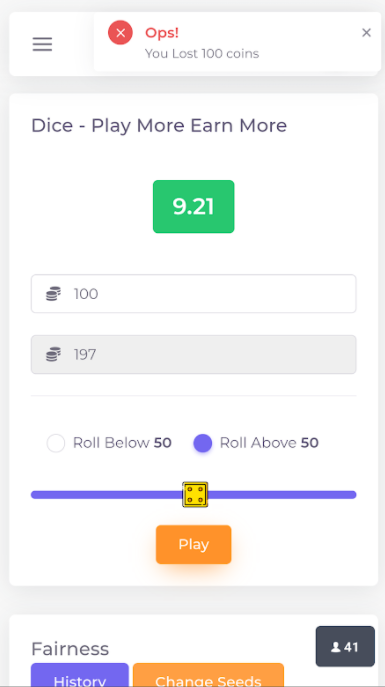
Captcha
Many sites actually earn a small amount of money every captcha (ReCaptcha, hCaptcha, RainCaptcha, SolveMedia, etc) the users complete on the site. The primary use of captchas is to prevent bots and spam, some but not all offer the additional opportunity for revenue. These may also pay out at a certain amount per 1,000 completions, or some variable number. They may not be huge revenue generators, but they are on almost all tasks users complete.
Mining
This is one of the more annoying way some sites make money, and that says a lot if you are familiar with shortlinks and captchas! Some faucet operators will actually have code embedded in their site that will use the site visitors CPU/GPU power to mine crypto in the background while on the page. This is why some faucet sites will set off users anti-virus programs such as MalwareBytes. Not all sites do this because of backlash, but if there is money to be made, businesses will find it.
Withdrawal Fees
Just like on Paid to Click (PTC) campaigns, this works due to the “spread”. The faucet site may charge you an amount to cover transaction fees, but if that amount is more than they actual pay in fees, they profit. A faucet site often uses payment processors and batches transactions to reduce the average transaction fee. There are faucet microwallet services, such as FaucetPay that reduce transactions fees to nothing by using a custodial service. So if you ever get charged a withdrawal fee for sending crypto to FaucetPay you just earned the site money. That’s not a bad thing, after all it is a business, and we are all interested in making money.
How faucet businesses fail
The vast majority of Faucet revenue as an operator is from the various forms of advertising discussed above. Because of this most revenue is paid out at non-standard intervals, it can cause some trouble when managing revenues and expenses that have been the downfall of faucets in the past. Think about it this way, users of the site earns crypto on a daily basis and are allowed to withdraw essentially anytime once they hit a certain threshold, but the site operators main income from Ad revenue can come in at any time throughout a month depending on when they hit thresholds with their advertisers. When planning and operating a business, its difficult when you know you have outgoing expenses daily but income/revenue only every couple days/weeks/months. On top of this, the cryptocurrencies themselves are changing value based on market conditions, but ad revenue is often times in a fiat currency, for example US Dollars (USD). In early 2021, the meteoric rise of Dogecoin (DOGE) and the crypto market in general, caused a very interesting stress test for many cryptocurrency faucets. This is because some faucets, such as the beloved Coinpot (RIP) kept user balances in the actual coins. Therefore, if a user had a balance of 100 Dogecoin, they generated probably a few dollars worth of revenue for the business. However, when the price of Dogecoin skyrocketed and that 100 Dogecoin was worth nearly $72 USD sites face a challenge paying users what they were owed. That outward expense that was worth $1 and generate a few dollars of profit for the company based on the fiat USD value at the time was now a liability of almost $72. Repeat across thousands of site users you create a full blown crisis. So if the faucet operator wasn’t sitting on a large stash of cryptocurrency already, they then would have to use Fiat dollars to buy those coins at the high prices, which destroyed any profitability the operation had. How sites typically manage this now is that many have their own “internal” coin or currency that is pegged to a certain fiat value, so you don’t lock in a cryptocurrency amount until time of withdrawal. This is both good and bad, we all want to find a windfall, but faucet sites and businesses in general need to ensure they can weather events such as that, and with inconsistent revenues this is really the only solution. A faucet that can’t pay out, is no good to you as a user either!
As previously mentioned, many sites vary in approach, business model, revenue and expenses. We wanted to cover the basics of how a cryptocurrency faucet business earns money, so you can make more informed decisions.
Common arguments against faucets
The internet is filled with people’s complaints about cryptocurrency faucets and saying they are not worth the time. In many aspects they may be right, there are plenty of problems in the faucet industry and the crypto industry in general. We however, believe that overlooks the fact that value of ones interests and time varies person to person. So it is really up to each individual person to decide if crypto faucets are for them or not. We at TapCrypto believe for a number of reasons such as monetary opportunity, and even theoretically about mass adoption of crypto, that faucets offer a valuable service for many people.
I want Bitcoin to be successful, so I created this little service to give you a few coins to start with.
Gavin Andresen
The payouts are low
The largest complaint about faucets are that the payouts are low. Earnings certainly may not be enough for many people to live off of, but can be a nice source of supplemental income. This is especially true for certain countries/areas of the world. Earning a few US Dollars a week can be extraordinarily impactful if living in countries that experience high inflation or economic instability.
The original Bitcoin (BTC) Faucet paid out 5 Bitcoin!
I always laugh at these comparisons, yeah sites pay out pennies on the dollar… but so did the original Bitcoin faucet. 5 Bitcoin was not $175,000+ USD back in 2010. 5 Bitcoin was worth pennies. In fact in July 2010, Bitcoin cost around $0.0008 USD (with high volatility) was giving out $0.004 USD per day. I don’t even know how much that is today with inflation of the USD since! So if you really wanted to make a point, faucets payout more today than they originally did. No one really knew that Bitcoin would become what it has. If they did, the faucet probably wouldn’t have paid out at the rate it was. The original faucet was created with the message “I want Bitcoin to be successful, so I created this little service to give you a few coins to start with.” at the bottom. The intent was to get Bitcoin in as many peoples hands as possible, as that was the way to create a movement and spur mass adoption. It’s impact on the cryptocurrency industry and Bitcoin’s growth is simply immeasurable, just like the impacts of Silk Road or the 10,000 Bitcoin Pizza. The faucet industry is definitely not as pure intentioned as it was back then, that fits along with the rest of the crypto space. But, part of the element about getting cryptocurrencies into as many peoples hands as possible remains. Faucets enable anyone to acquire amounts of crypto who may not have the funds to otherwise buy it. I think faucets can contribute and have positive benefits overall on the mass adoption of cryptocurrencies.
Most sites are scams
Yes, the cryptocurrency industry is full of scams and fraud. Thus by nature, so is the cryptocurrency faucet business. This is why we are starting to document potentially fraudulent sites to warn more people. The faucet business is full of questionable marketing, business plans, financial backing or wherewithal to survive currency fluctuations, but some sites have managed to stay in business for years. At TapCrypto, we help keep faucet users informed by doing the following.
- Provide frequently updated payment proofs from many cryptocurrency faucets.
- Faucet Reviews and detail how each site works, and provide tips to maximize earnings.
- Give updates regarding service outages and other crypto industry news @tapcrypto1
- Document and alert users about potential scam faucet sites.
Earning interest
The magic of investing over the long term is the potential for compound growth. Thanks to the growth of the overall industry, there are a lot more things you can do with you crypto today than just hodl now. Below we will talk about a few options, as always with any financial transactions, do your own research, understand risks and vulnerabilities around custodial services before doing anything. Things are a little more regulated, but the adage of “Not You Keys, Not You Coins” still applies. We at TapCrypto like to put our faucet earnings to work, earning interest to further grow our stash.
Proof-of-Stake (POS) Coins
One option that is quite attractive to those people who do not wish to hand over their coins to a custodial service, is to invest/purchase Proof-of-Stake (POS) Coins. Proof-of-Stake is a consensus mechanism for a blockchain in which holders delegate their coins to help secure the blockchain and create new blocks, in return they receive staking rewards in the form of new coins. These offer easy ways to increase your stash, just make sure that the staking reward/interest percent is greater than the overall network inflation, or you are not actually gaining any value.
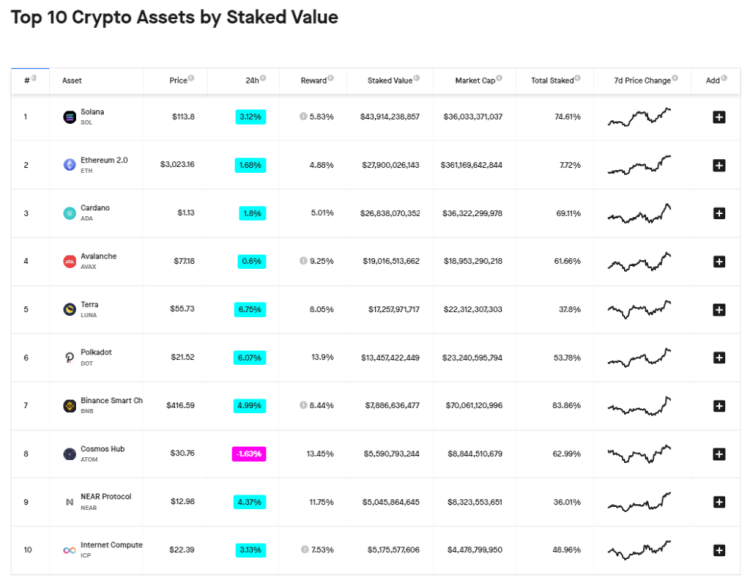
Often with PoS coins, you may also be eligible for Airdrops of coins being built on their network. Example, Cosmos (and other coins on their network) has nearly 40 different airdrops in progress or planned. Many have certain requirements, so you’d need to be sure you are eligible. Airdrops are a method of cryptocurrency distribution to gain attention and new users of networks. These are usually free, which offer very attractive incentives for Stakers as they gain new coins for little to no effort, some of which can be pretty lucrative. So often using faucets are a nice way to supplement or create a stash for Proof-of-Stake coins for even higher returns.
Interest apps
Self custody wallets and staking is not for everyone. It does take some level of technical understanding, though it becomes more and more user friendly everyday. You do often earn better rates of return by self custody/staking, but you can also earn some by holding on exchanges/lending services. For some it may be the safest option to rely on a third party, much like people rely on banks. There are many services, so do your due diligence before buying or depositing funds on any site….ever.
Here are a few of the more well known and trusted services where you can hold your crypto and earn interest in many cases. Many of these operate both as exchanges and lending platforms, so we categorized just based on our opinion. These companies/services generate profits on user deposits by doing a couple things (strategies differ by business), trading/transactions fees, lending out funds and earning from those loans, and staking coins and profiting off the spread between actual returns and what is provided to users.
Exchanges
- Coinbase – One of the most popular exchanges, but they do offer interest rates on some coins on the platform. Even offer free cryptocurrency as part of their “Learn & Earn” program.
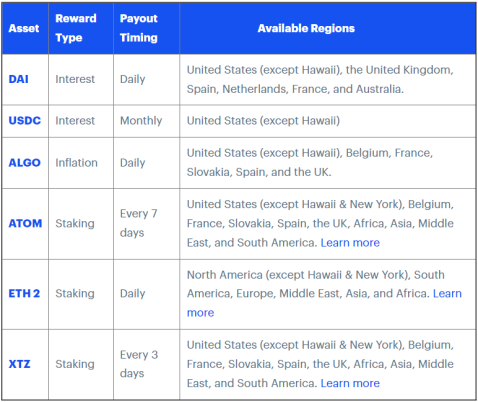
- FTX/BlockFolio – Offers interest for funds held on platform.


There are a ton of others, such as Kraken, Gemini, and more that offer similar services and rates, research to find out which one, if any, is right for you.
Lending platforms
- Celsius – In our opinion, this is one of the nicer services we’ve used. Offer nearly 50 coins, including stable coins to earn interest on. Interest rates vary by coin but you can earn 8%+ on stable coins.
- Please note, Celsius has paused all withdrawals and frozen assets. We do not recommend Celsius to anyone and hope no one is adversely impacted by their decision. Read the Celsius Memo.
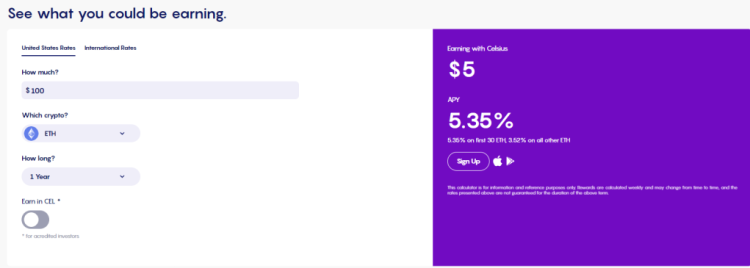
- Nexo – Another great option we have tried out. Offers both Fixed (must hold for a period of time like a certificate of deposit) and Flex rates (can move funds whenever you’d like).

- BlockFi – Another solid choice, offers competitive rates and an easy to navigate platform.
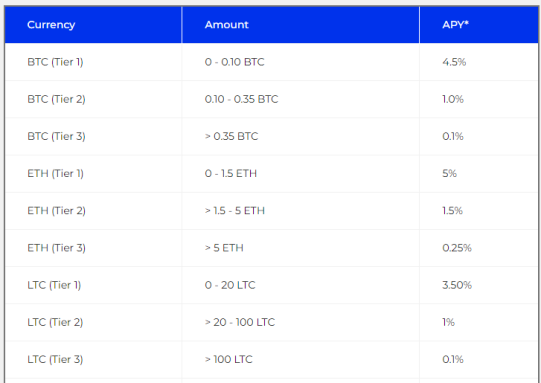
There are more services out there such as Voyager, please always be careful and research before deciding if investing/staking is for you and appropriate for your personal circumstances.
Future value of cryptocurrency
The funny thing about using faucets pretty consistently over the past few years is that you can see the power of accumulating coins early and the overall value growth of the cryptocurrency market. Now this can work both ways depending on timing with Bull and/or Bear markets, but we wanted to show some fun real examples, using actual payment proofs.
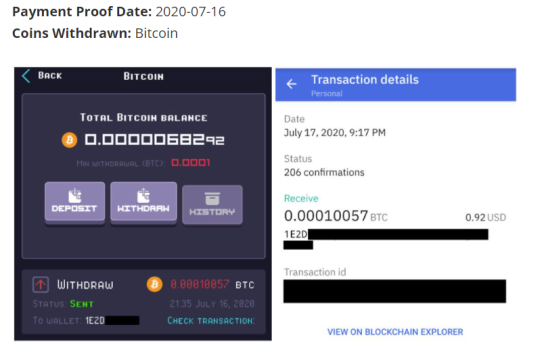
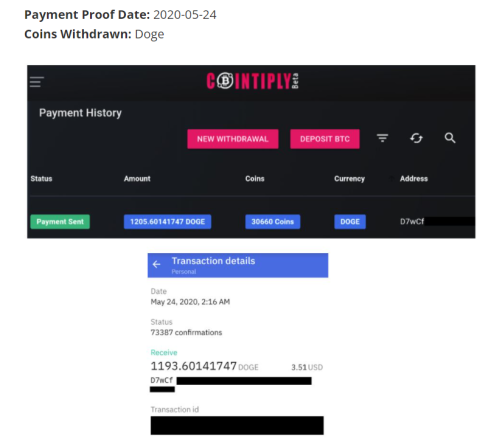
Nobody knows the future, if someone says they do, they are a liar. So there is no way to know what is in store for the cryptocurrency industry. If you, like us, believe the crypto industry is around to stay, grow, and thrive, then faucets and other sites such as Lolli or web browser Brave, are an easy way to “stack sats” and hodl. It wasn’t reasonable to expect the same growth in value that Bitcoin had from 2010 to now, but then a similar event happened with Dogecoin in 2021. Its always low chances you will catch on to a rocket ship, but its not impossible. That’s how we missed out on an opportunity for $25,000. We had been pretty casual faucet users from around 2016/2017. We estimate that we had collected around 35,000 Dogecoin, not to mention many other cryptocurrencies, by mid 2018, that we sold as quick as we received them. At the price of around $0.005 USD in 2018, we traded about $175 USD to a bunch of other coins, some of which are no longer around. At its peak price of nearly $0.72 USD, that’s $25,200… ouch :(. That said we continue to hold coins that we have earned via faucets over the years and continue to have interest in cryptocurrency faucets.
We at TapCrypto appreciate you taking the time to read our article. You can find Site Reviews and Payment Proofs of all cryptocurrency faucets we use by subscribing to our site. Follow us @tapcrypto1 on Twitter for more updates. Thank you!

